A 3D-Printed Invisibility Cloak?
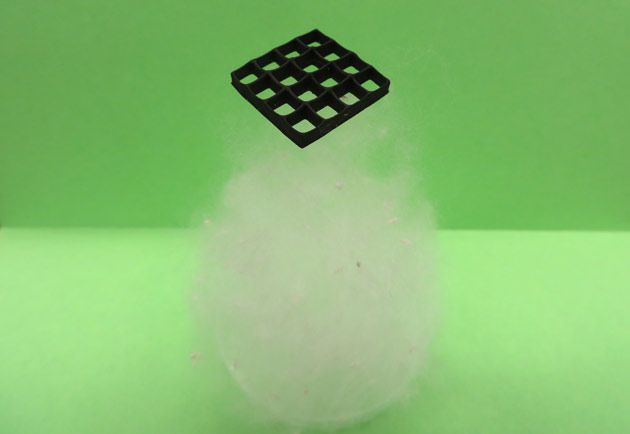 Above: The world's lightest material won't dent a cotton ball. Image credit: State University of New York (SUNY) at Buffalo and Kansas State University. Top image credit: Getty Images
Above: The world's lightest material won't dent a cotton ball. Image credit: State University of New York (SUNY) at Buffalo and Kansas State University. Top image credit: Getty ImagesScientists from the State University of New York (SUNY) at Buffalo and Kansas State University have 3D-printed objects from the world’s lightest material, graphene aerogel. Aerogels, also called frozen smoke, are highly porous materials where the liquid has been replaced with a gas. Graphene is a thin film of carbon just a single atom wide. Graphene aerogel is “so light that a large block of it wouldn’t make a dent on a tiny ball of cotton,” Quartz reported. “The minimal density of aerogels allows for a number of possible applications, researchers have found, ranging from soaking up oil spills to ‘invisibility’ cloaks.” 3D-printing the material could speed up prototyping and manufacturing and lead to new engineering applications.
Do You Want To Live Forever?
[embed width="800"]https://www.youtube.com/watch?v=3r_p__9EHxU[/embed]
Scientists at the Salk Institute for Biological Studies in California have reversed aging in mice suffering from progeria, a rare premature-aging disease, “countering signs of aging and increasing the animals’ lifespan by 30 percent.” The did it by “reprogramming” four genes in skin cells from the mice. These genes, known as Yamanaka factors, can convert any cell to an induced pluripotent stem cell, which is capable of dividing indefinitely. Salk reported that when the team examined the cells “using standard laboratory methods, the cells showed reversal of multiple aging hallmarks without losing their skin-cell integrity.” Says Salk’s Juan Carlos Izpisua Belmonte, senior author of the study, which was published in the journal Cell: “Obviously, mice are not humans and we know it will be much more complex to rejuvenate a person. But this study shows that aging is a very dynamic and plastic process, and therefore will be more amenable to therapeutic interventions than what we previously thought.”
This Is What We Call A Thinking Cap
[embed width="800"]https://www.youtube.com/watch?v=zs5k7MpS1g0[/embed]
Researchers at the University of Tübingen in Germany have developed a “neurorobotic hand exoskeleton” that humans control simply by wearing a cap studded with electrodes. The device doesn’t require surgery. The team reported that six quadriplegic patients who participated in the study could perform such functions as eating and drinking independently. The system works by translating brain electric activity into hand grasping motions. “Hand motor function reached almost normal levels,” the scientists wrote in the study. “Integration of portable, battery-driven, and partly wireless brain/neural-computer interaction (BNCI) components into a standard wheelchair enabled the study participants to move freely” in their everyday environments. The results were published in the journal Science Robotics.
A Novel Written by AI Makes the Cut for a Literary Prize

A short novel written by a Japanese artificial intelligence software program passed the first screening round for the Nikkei Hoshi Shinichi Literary Award. “The day a computer wrote a novel,” the program wrote near the end of the piece, “the computer, placing priority on the pursuit of its own joy, stopped working for humans.”
Scientists Are Using AI To Evolve New Supermaterials In The Cloud
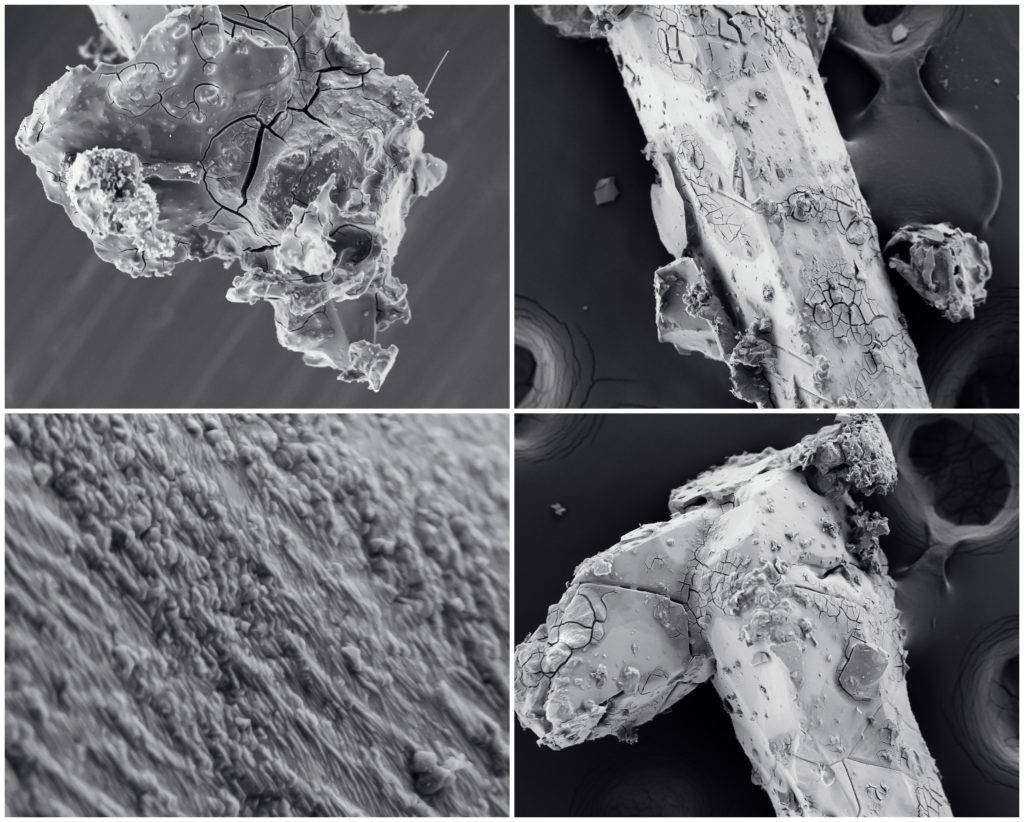 Top image: “It’s really exciting to see our small origami robots doing something with potentially important applications to healthcare,” Daniela Rus says. Pictured, an example of a capsule and the unfolded origami device. Photo: Melanie Gonick/MIT Above: A ternary InGaAs alloy viewed through the electron microscope at different magnification levels. Image credit: Getty Images.
Top image: “It’s really exciting to see our small origami robots doing something with potentially important applications to healthcare,” Daniela Rus says. Pictured, an example of a capsule and the unfolded origami device. Photo: Melanie Gonick/MIT Above: A ternary InGaAs alloy viewed through the electron microscope at different magnification levels. Image credit: Getty Images.Researchers in Switzerland and California are using computer modeling, machine learning and other artificial intelligence techniques to create new supermaterials by mixing and matching the known properties of materials stored inside a data cloud. “We probably know about 1 percent of the properties of existing materials,” Gerbrand Ceder, a materials scientist at the University of California, Berkeley, told Nature magazine. Nature reported that “at least three major materials databases already exist around the world, each encompassing tens or hundreds of thousands of compounds.” Neil Alford, a materials scientist at Imperial College London, told the magazine that “we are now seeing a real convergence of what experimentalists want and what theorists can deliver.”
This Flexible Camera Can Be Wrapped Around Objects
[embed width="800"]https://www.youtube.com/watch?v=Q_Ve0XPVdTc[/embed]
Scientists at Columbia University have developed a flexible sheet camera that adapts its optics when it is wrapped around objects and keeps gathering high-quality images. Shree Nayar, the Columbia professor of computer science who designed the device, built the camera with his colleague from an elastic array of adaptive lenses “that enables the focal length of each lens in the sheet camera to vary with the local curvature.” Said Nayar: “Cameras today capture the world from essentially a single point in space. We believe there are numerous applications for cameras that are large in format but very thin and highly flexible.”
A Homerun For Ted Williams?
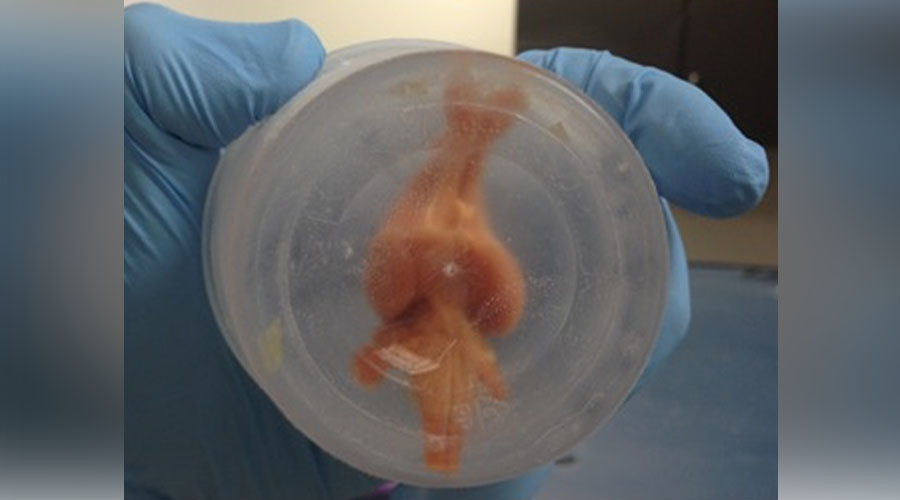 Scientists were able to freeze and recover a rabbit brain with its structure intact. Image credit: Brain Preservation Foundation
Scientists were able to freeze and recover a rabbit brain with its structure intact. Image credit: Brain Preservation FoundationA number of people, including reportedly Red Sox left fielder Ted Williams, have had their corpses frozen in the hope that they can be revived in the future. This process, called cryopreservation, presents many challenges, chief among them keeping the delicate structure of the brain intact. But that may be changing. A group of researchers from 21st Century Medicine, a biomedical company, used a combination of “ultrafast chemical fixation” and bone-chilling minus 135 degrees Celsius to freeze and recover a rabbit brain, including its neurons and synapses. “It is the first demonstration that near-perfect, long-term structural preservation of an intact mammalian brain is achievable,” the Brain Preservation Foundation reported.
Wattway On The Highway
 Top and above images credit: Joachim Bertrand, Wattway
Top and above images credit: Joachim Bertrand, WattwayEngineers in France plan to pave over 600 miles (1,000 kilometers) of roads with a solar panel surface that’s just a quarter of an inch thick (7 millimeters) and strong enough to handle heavy trucks. One kilometer of this solar pavement can reportedly generate enough electricity to power the public lighting system for a town of 5,000 people. Called Wattway, the pavement was developed by Colas, a transportation infrastructure company, and INES, France's National Institute for Solar Energy.
New Therapy Stops Lou Gehrig’s Disease In Mice
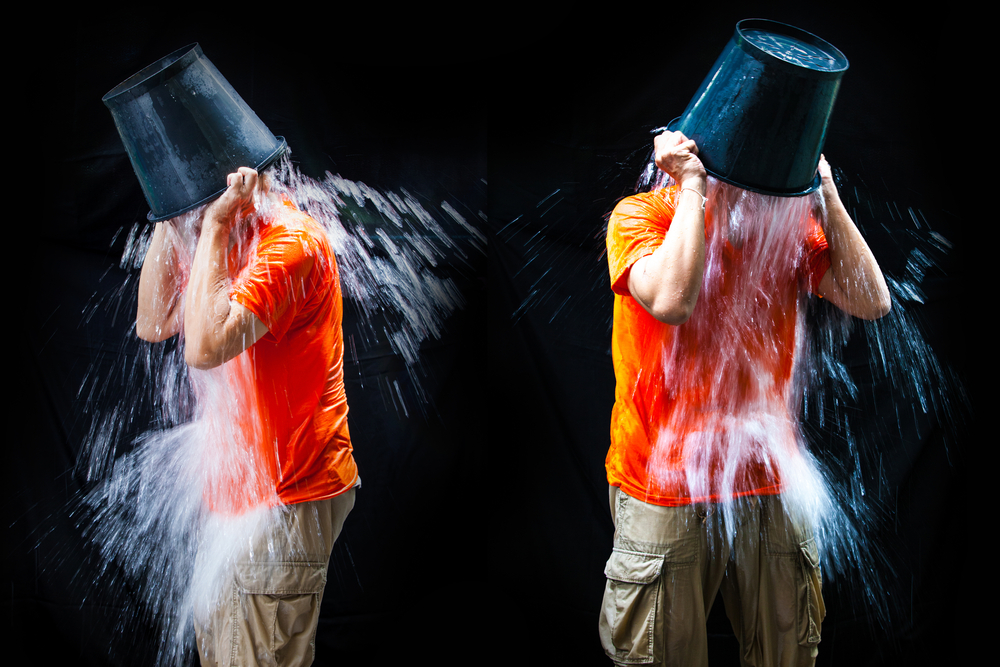 The ice bucket challenge raised $220 million for ALS research. Image credit: Getty Images
The ice bucket challenge raised $220 million for ALS research. Image credit: Getty Images“I might have been given a bad break, but I’ve got an awful lot to live for,” first baseman Lou Gehrig said in his farewell speech at Yankee Stadium in 1939. His bad break was amyotrophic lateral sclerosis (ALS), a progressive disease of the nervous system. It kills motor neurons, preventing the brain from controlling muscles throughout the body and leads to death. Gehrig passed away in 1941 and treatment for the ailment remains elusive. But researchers at Oregon State University just reported they “essentially stopped the progression” of ALS in mice, “allowing the mice to approach their normal lifespan.” The key, they say, is a compound that helps deliver copper to cells with damaged mitochondria, the tiny biological battery packs that supply them with energy. “We are shocked at how well this treatment can stop the progression of ALS," said Joseph Beckman, lead author on this study.
New Process Allows Kidney Transplants From Any Donor
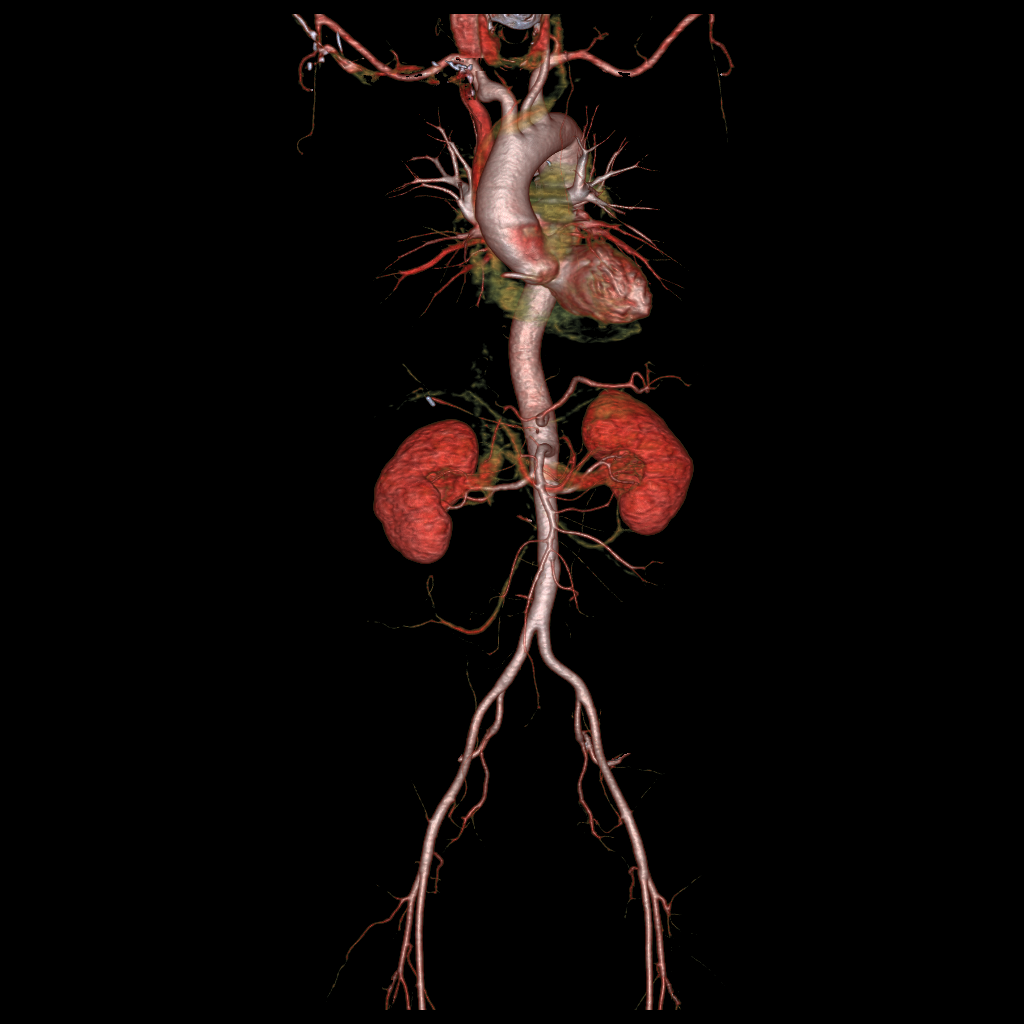 This image of the kidneys was captured by GE's Revolution CT scanner. Image credit: GE Healthcare
This image of the kidneys was captured by GE's Revolution CT scanner. Image credit: GE HealthcareA study that involved 22 medical institutions and more than 1,000 patients has successfully tested a procedure that allows doctors to tweak a patient’s immune system and transplant kidneys from any donor. Called desensitization, the process first filters out antibodies from the patient’s blood to prevent rejection. When the body replenishes its own antibodies, they do not attack the new kidney. There are more than 100,000 patients in the U.S. waiting for a kidney transplant. The procedure could dramatically reduce the number of people on the waiting list. "Desensitization is still not for every transplant center," senior author Dr. Dorry Segev, of Johns Hopkins University, told the Associated Press. But the findings show "you don't need a compatible living donor to make a transplant happen today — you just need a living donor." The results were published in the New England Journal of Medicine.
This Hoverboard Can Reach 150 Mph!
[embed width="800"]https://www.youtube.com/watch?v=KEDrMriKsFM[/embed]
Franky Zapata, the man who invented the water jet Flyboard, is moving up. The 37-year-old Frenchman just introduced his latest invention: Flyboard Air. The device is basically a small platform the size of a night table propelled upward by an air jet. He says he can use the platform to go as high as 10,000 feet, reach top speed of 152 miles per hour and fly for 10 minutes. He appears to use a wireless joystick to control it. Take a look.
Newly Discovered Brain Network Could Be Key To Consciousness
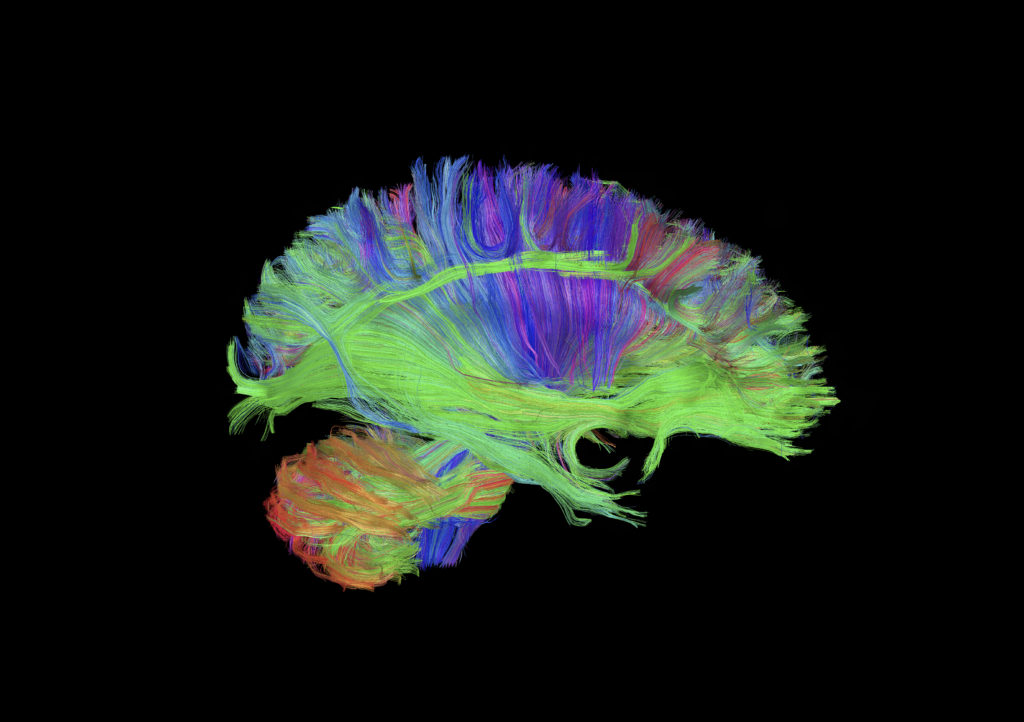 Top and above: This image shows complex connectivity patterns of the human cortex. The data was acquired and processed on a GE MRI scanner (MR750) with a 3 Tesla magnet. Image Credit: Luca Marinelli, Ek Tsoon Tan, GE Global Research
Top and above: This image shows complex connectivity patterns of the human cortex. The data was acquired and processed on a GE MRI scanner (MR750) with a 3 Tesla magnet. Image Credit: Luca Marinelli, Ek Tsoon Tan, GE Global ResearchConsciousness emerges from an interplay between the brain stem and two regions in the cerebral cortex, say American neuroscientists working at Harvard University and the Beth Israel Deaconess Medical Center. The scientists first studied 36 patients with brain stem legions, 12 of which led to coma. The brain stem is believed to be critical for arousal - a key component of consciousness. The researchers discovered that 10 of these coma-causing lesions involved a small area of the brain stem. Then they identified the parts of the brain's outer cortex had previously been linked to arousal and awareness. “For the first time, we have found a connection between the brainstem region involved in arousal and regions involved in awareness, two prerequisites for consciousness,” said the BIMDC’s Michael D. Fox. “A lot of pieces of evidence all came together to point to this network playing a role in human consciousness.” The team then used magnetic resonance imaging to observe whether this brain stem-cortex network was indeed disrupted in patients with impaired consciousness. “The findings — bolstered by data from rodent studies — suggest the network between the brainstem and these two cortical regions plays a role maintaining human consciousness,” they wrote in a news release. Says Aaron Boes, Fox’s former colleague at BIMDC and a co-lead author of the study: “The added value of thinking about coma as a network disorder is it presents possible targets for therapy, such as using brain stimulation to augment recovery.” The results were published in the journal Neurology.
This AI Could Soon Find What You’ve Been Looking For
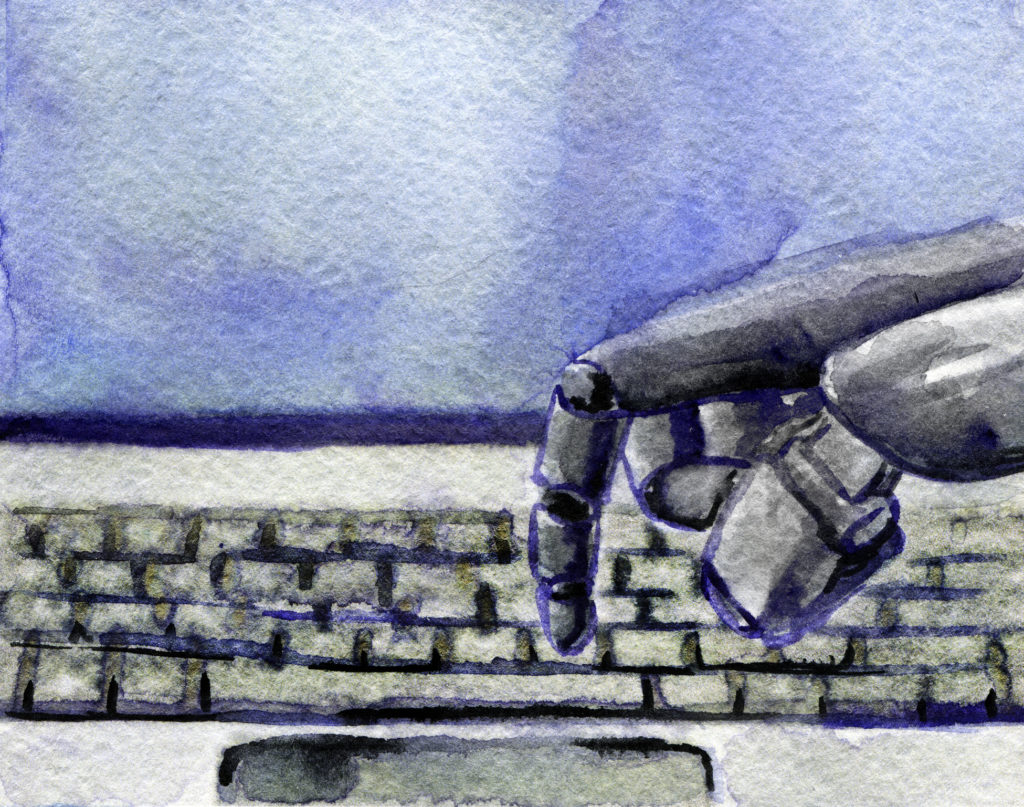 An AI developed at MIT "learned clusters of search terms that tended to be associated with the data items it was trying to extract," says MIT professor Regina Barzilay. Illustration credit: Getty Images
An AI developed at MIT "learned clusters of search terms that tended to be associated with the data items it was trying to extract," says MIT professor Regina Barzilay. Illustration credit: Getty ImagesComputer scientists at MIT have developed an artificial intelligence that can surf the internet and extract information to improve its performance. “When you're reading an article that you can't understand, you're going to go on the web and find one that you can understand," says MIT professor Regina Barzilay. The AI is doing the same thing, the team says. It ran two tests involving data about mass shootings and food contamination. “In each case, the system was trained on about 300 documents,” the team wrote in a news release. “From those documents, it learned clusters of search terms that tended to be associated with the data items it was trying to extract. For instance, the names of mass shooters were correlated with terms like ‘police,’ ‘identified,’ ‘arrested,’ and ‘charged.’ During training, for each article the system was asked to analyze, it pulled up, on average, another nine or 10 news articles from the web.” The team found that compared with more conventional information extractors, “for every data item extracted in both tasks, the new system outperformed its predecessors, usually by about 10 percent.”
Wireless Brain Device Makes Paralyzed Monkeys Walk Again
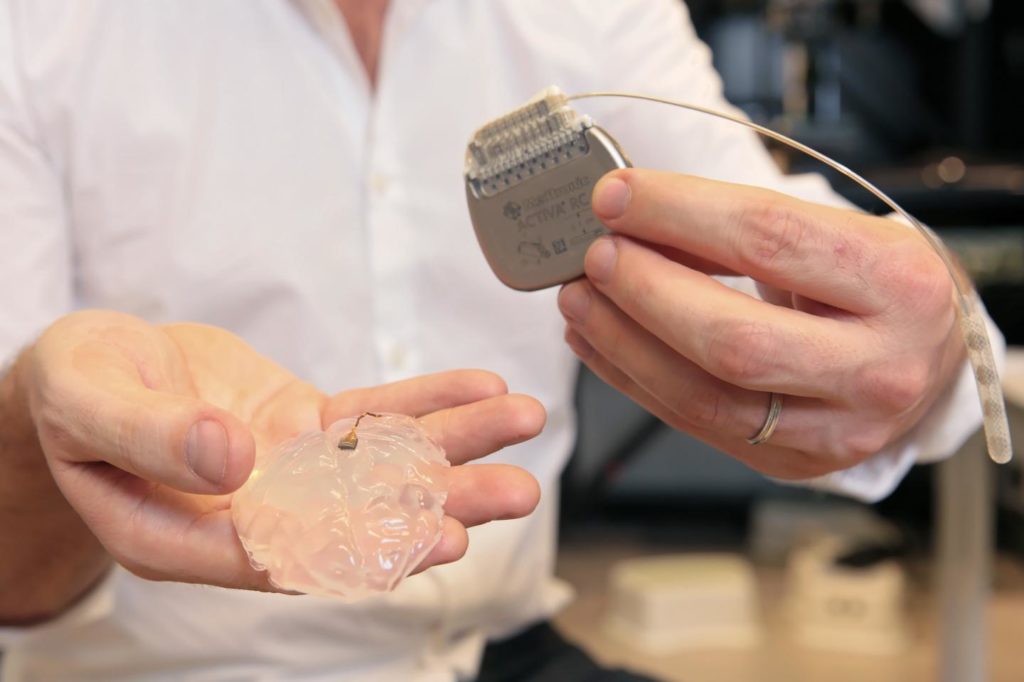 "With the system turned on, the animals in our study had nearly normal locomotion," says Brown's David Borton. Image credit: Brown University
"With the system turned on, the animals in our study had nearly normal locomotion," says Brown's David Borton. Image credit: Brown UniversityScientists in Europe and the U.S. have built a new wireless “brain-spinal interface” that allowed a pair of monkeys to restore the movement of their temporarily paralyzed legs and walk. "The system we have developed uses signals recorded from the motor cortex of the brain to trigger coordinated electrical stimulation of nerves in the spine that are responsible for locomotion," said David Borton, assistant professor of engineering at Brown University and one of the study's co-lead authors. "With the system turned on, the animals in our study had nearly normal locomotion." Borton said that there was “evidence to suggest that a brain-controlled spinal stimulation system may enhance rehabilitation after a spinal cord injury. This is a step toward further testing that possibility." The study was published in the journal Nature.
Tiny Light-Guided Stingray Made From Rat Heart Muscles Navigates Obstacle Course
[embed width="800"]https://www.youtube.com/watch?v=CEpSVfSUIU4[/embed]
Top image: A tissue-engineered soft-robotic ray, on the left, and a little skate, Leucoraja erinacea, on the right. Image credit: Karaghen Hudson
Harvard University bioengineer Kit Parker designed a tiny, translucent, swimming stingray robot using 200,000 genetically engineered rat heart muscle cells. “Roughly speaking, we made this thing with a pinch of rat cardiac cells, a pinch of breast implant and a pinch of gold,” he told Popular Mechanics. “That pretty much sums it up, except for the genetic engineering.” The robot can follow flashes of light and navigate an obstacle course (see video above). "Really what we're doing is using tools from robotics to understand the heart," Parker told Popular Science. He published the results in the journal Science.
A Loch Ness Monster Found!
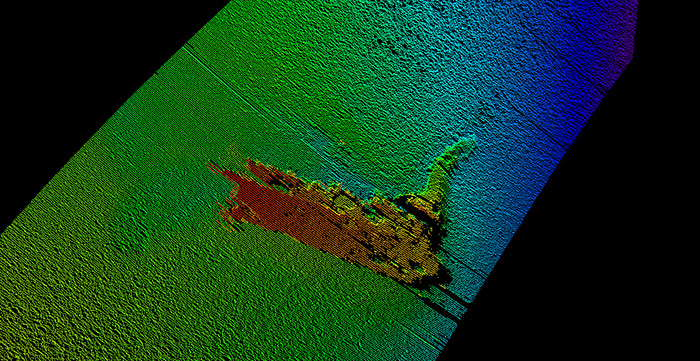 Kongsberg's survey uncovered the remains of the Loch Ness monster model resting on a crest on the bottom of the loch, some 180 metres deep. Image credit: Kongsberg Maritime
Kongsberg's survey uncovered the remains of the Loch Ness monster model resting on a crest on the bottom of the loch, some 180 metres deep. Image credit: Kongsberg MaritimeUsing a torpedo-like underwater robot equipped with high-tech sonar, engineers from Norwegian company Kongsberg Maritime found a Loch Ness monster resting on the bottom of the Scottish lake. But it wasn’t the real thing. The robot had discovered a movie prop used during filming the 1970 movie “The Private Life of Sherlock Holmes.” The prop had sunk and remained lost in the Loch’s 180-meter deep trench. Until this week. Kongsberg has been surveying the lake since 1987. “Over the years, the company has returned many times, bringing the latest technology to uncover the Loch's mysteries,” said Craig Wallace, the company’s senior subsea applications engineer.





